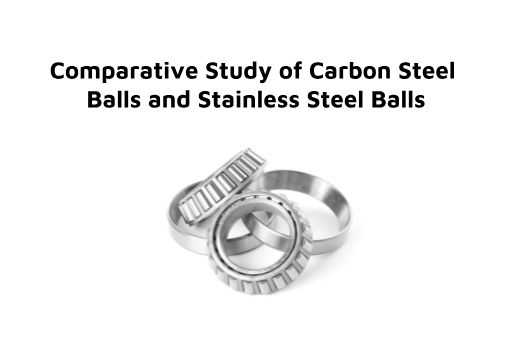
 Home > News
Home > NewsSteel balls are critical components in various industries, including automotive, aerospace, and manufacturing, due to their mechanical properties and versatility. Among the different types of steel balls, carbon steel balls and stainless steel balls are the most commonly used. This article provides a comparative study of these two types of steel balls, focusing on their composition, properties, applications, and advantages.

Carbon Steel Balls:
Composition: Carbon steel balls are made primarily of iron and carbon, with the carbon content typically ranging from 0.05% to 1.70%. They may also contain small amounts of other elements, such as manganese and silicon, to enhance specific properties.
Types: Based on carbon content, carbon steel is categorized into low, medium, and high carbon steel.
Stainless Steel Balls:
Composition: Stainless steel balls are made of iron, chromium (at least 10.5%), and often nickel and molybdenum. The chromium content provides corrosion resistance by forming a passive layer of chromium oxide.
Types: Stainless steel can be classified into several types, such as austenitic, martensitic, and ferritic, based on their crystalline structure and alloy composition.
Carbon Steel Balls:
Hardness: Generally harder than stainless steel balls due to higher carbon content, which increases their hardness and wear resistance.
Strength: Possess high tensile strength, making them suitable for heavy-load applications.
Corrosion Resistance: Poor corrosion resistance compared to stainless steel, making them unsuitable for use in environments with high moisture or chemical exposure.
Stainless Steel Balls:
Hardness: Softer than carbon steel balls, but specific types like martensitic stainless steel can be hardened through heat treatment.
Strength: Good tensile strength, though typically lower than that of carbon steel.
Corrosion Resistance: Excellent corrosion resistance due to chromium content, suitable for use in harsh environments and applications where hygiene is crucial.
Carbon Steel Balls:
Industries: Widely used in the automotive, mining, and agricultural industries.
Applications: Bearings, gears, valves, and various mechanical components where high strength and wear resistance are required.
Stainless Steel Balls:
Industries: Used in food processing, medical, chemical, and marine industries.
Applications: Food-grade bearings, pumps, valves, and medical devices where corrosion resistance and hygiene are important.
Carbon Steel Balls:
Advantages:
High hardness and strength.
Cost-effective for applications where corrosion resistance is not a priority.
Disadvantages:
Susceptible to rust and corrosion, limiting their use in certain environments.
Requires additional coating or plating for corrosion protection.
Stainless Steel Balls:
Advantages:
Superior corrosion resistance, ideal for use in wet or chemically aggressive environments.
Long-lasting with low maintenance requirements in corrosive environments.
Disadvantages:
Generally more expensive than carbon steel balls.
Lower hardness in some types, which may not be suitable for high-load applications without specific heat treatment.
The choice between carbon steel balls and stainless steel balls depends on the specific requirements of the application, such as load, environment, and cost constraints. Carbon steel balls are ideal for applications requiring high strength and wear resistance, while stainless steel balls are better suited for environments where corrosion resistance and hygiene are crucial. Understanding the differences in composition and properties allows for informed decision-making, ensuring the optimal performance of mechanical systems across various industries.
View More(Total0)Comment Lists